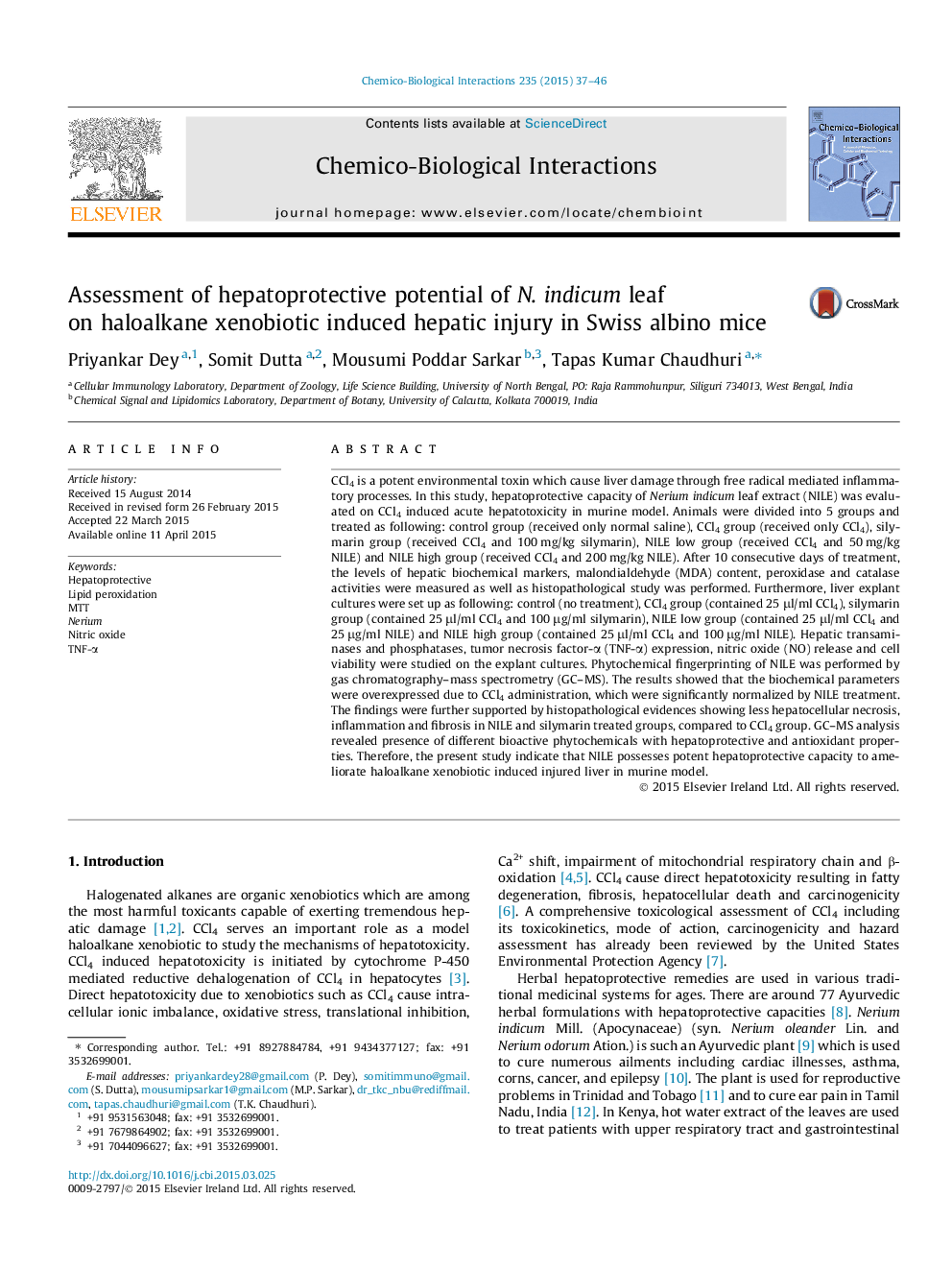| Article ID | Journal | Published Year | Pages | File Type |
|---|---|---|---|---|
| 2580154 | Chemico-Biological Interactions | 2015 | 10 Pages |
•NILE ameliorated hepatic marker enzymes on CCl4 toxicity.•NILE normalized catalase and peroxidase activities and prevents lipid peroxidation.•NILE down-regulated TNF-α and nitric oxide expression.•GC–MS analysis reveals numerous bioactive constituents in NILE.
CCl4 is a potent environmental toxin which cause liver damage through free radical mediated inflammatory processes. In this study, hepatoprotective capacity of Nerium indicum leaf extract (NILE) was evaluated on CCl4 induced acute hepatotoxicity in murine model. Animals were divided into 5 groups and treated as following: control group (received only normal saline), CCl4 group (received only CCl4), silymarin group (received CCl4 and 100 mg/kg silymarin), NILE low group (received CCl4 and 50 mg/kg NILE) and NILE high group (received CCl4 and 200 mg/kg NILE). After 10 consecutive days of treatment, the levels of hepatic biochemical markers, malondialdehyde (MDA) content, peroxidase and catalase activities were measured as well as histopathological study was performed. Furthermore, liver explant cultures were set up as following: control (no treatment), CCl4 group (contained 25 μl/ml CCl4), silymarin group (contained 25 μl/ml CCl4 and 100 μg/ml silymarin), NILE low group (contained 25 μl/ml CCl4 and 25 μg/ml NILE) and NILE high group (contained 25 μl/ml CCl4 and 100 μg/ml NILE). Hepatic transaminases and phosphatases, tumor necrosis factor-α (TNF-α) expression, nitric oxide (NO) release and cell viability were studied on the explant cultures. Phytochemical fingerprinting of NILE was performed by gas chromatography–mass spectrometry (GC–MS). The results showed that the biochemical parameters were overexpressed due to CCl4 administration, which were significantly normalized by NILE treatment. The findings were further supported by histopathological evidences showing less hepatocellular necrosis, inflammation and fibrosis in NILE and silymarin treated groups, compared to CCl4 group. GC–MS analysis revealed presence of different bioactive phytochemicals with hepatoprotective and antioxidant properties. Therefore, the present study indicate that NILE possesses potent hepatoprotective capacity to ameliorate haloalkane xenobiotic induced injured liver in murine model.
Graphical abstractFigure optionsDownload full-size imageDownload as PowerPoint slide
